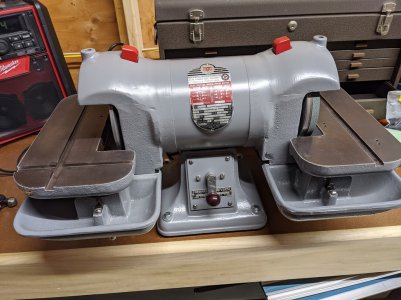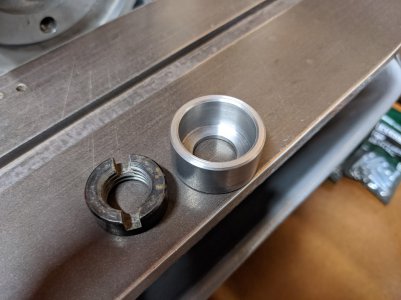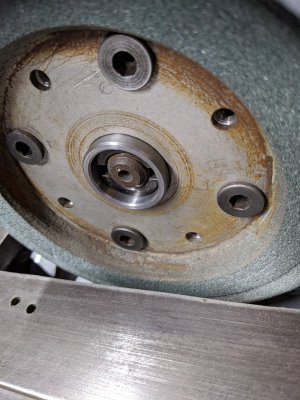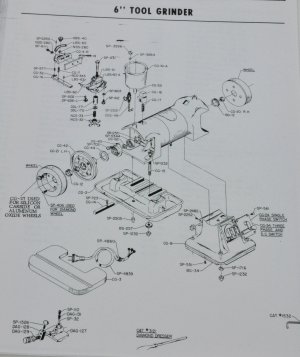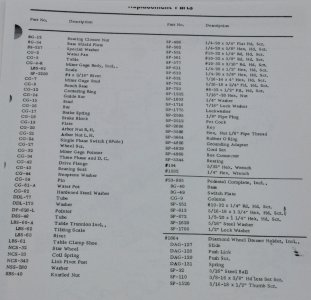- Joined
- Jun 10, 2019
- Messages
- 537
I recently picked up an old Rockwell 23-505 diamond tool grinder which I tore down to give it a bit of a refresh. I noticed that one of the wheel flanges (the disc which mounts on the arbor and grinding wheels bolt onto it) has a hairline crack where it fits over the arbor. The crack is on the key way and the material is aluminum. The crack is about 3/4" long...about a third to a half the total length of the bore. The wall thickness where its cracked is quite a bit thinner at the back half of the flange; it's easily 3x+ thicker towards the face of the wheel so I'd highly doubt it would propagate further.Should this be repaired? (maybe "needs" is a better word). Does it even look fixable?
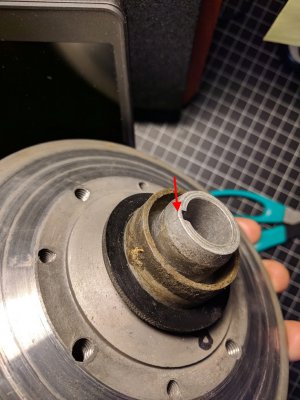
I'm also having a heck of a time finding part manuals, let alone parts. While very similar to the Baldor 500-series tool grinders, this Rockwell seems rare. If anyone has 23-505 part lists, could you please share?
I'm curious if the Baldor flange wheel would fit? The Baldor flange wheel p/n is HA6104A01SP and seems it can be had for about $50. It has the same spindle size of 0.75" and generally I'd guess it would fit. But the Rockwell's wheel has this grooved ring which interfaces with another flange inside the grinder housing and seems specific to the Rockwell. That said, I believe the groove is just to help prevent grinding dust from getting to the bearing. Depending on depth of the Baldor flanged wheel, i suppose it could be machined to work with this groove or I can machine a sleeve. Anyway, if anyone with the Baldor tool grinders (500, 510, 522, 523) can can share pictures and dimensions of this flange wheel: I'd be grateful!

I'm also having a heck of a time finding part manuals, let alone parts. While very similar to the Baldor 500-series tool grinders, this Rockwell seems rare. If anyone has 23-505 part lists, could you please share?
I'm curious if the Baldor flange wheel would fit? The Baldor flange wheel p/n is HA6104A01SP and seems it can be had for about $50. It has the same spindle size of 0.75" and generally I'd guess it would fit. But the Rockwell's wheel has this grooved ring which interfaces with another flange inside the grinder housing and seems specific to the Rockwell. That said, I believe the groove is just to help prevent grinding dust from getting to the bearing. Depending on depth of the Baldor flanged wheel, i suppose it could be machined to work with this groove or I can machine a sleeve. Anyway, if anyone with the Baldor tool grinders (500, 510, 522, 523) can can share pictures and dimensions of this flange wheel: I'd be grateful!

